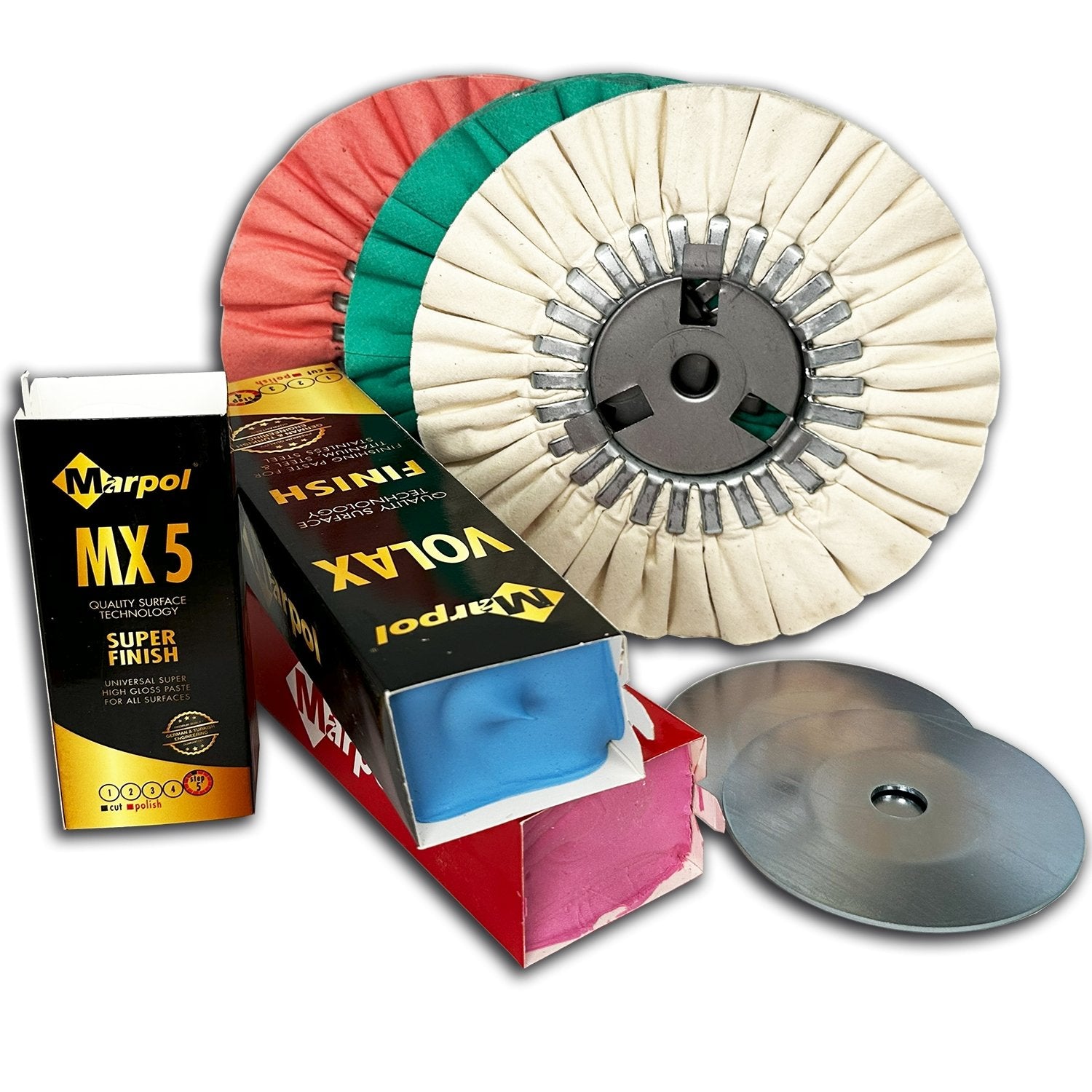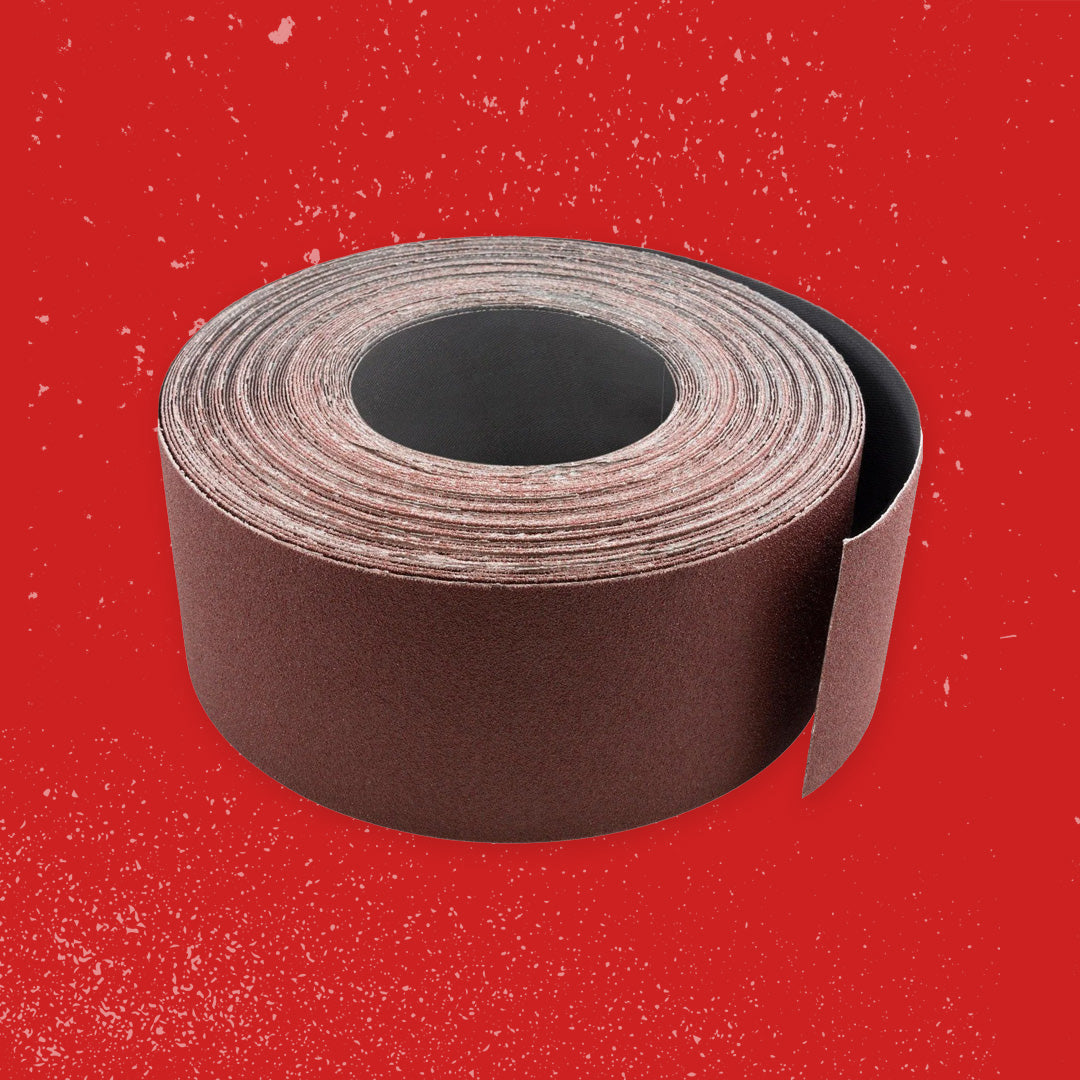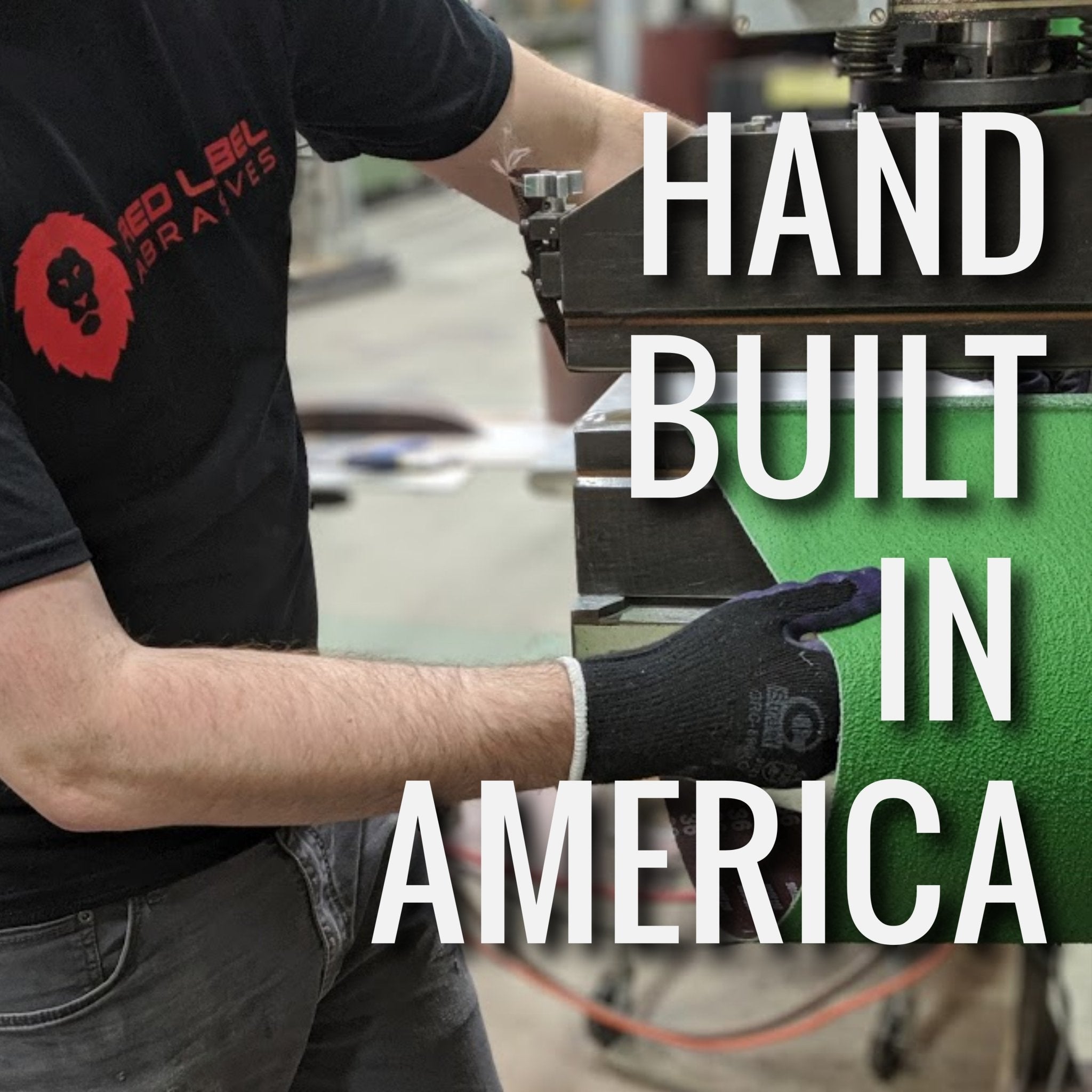Your Cart is Empty
Free Shipping over $150 (Excludes Oversized Products)
Free Shipping over $150 (Excludes Oversized Products)
Sanding Belts
Sanding Discs

What Is The Best Sandpaper To Remove Paint?
by David Kranker 8 min read

Quick Summary
Removing paint from different materials requires the right tools and careful techniques to protect the surface. The best sandpaper for paint removal will depend on the material you’re sanding paint off of. Aluminum oxide is a great choice for removing paint from softwoods. Zirconia is a good option for removing paint from hardwoods or metal. Silicon carbide is the preferred option for removing paint from heat-sensitive surfaces like plastic or fiberglass. Ceramic abrasives are the ideal choice for removing paint from metal. You’ll generally want to start with sandpaper in the range of 40-80 grit for initial paint removal.
Removing paint can feel like an uphill battle, especially when you’re working on stubborn surfaces like metal. Using the wrong material or technique could cause gouges and scratches or worse, but with so many sandpaper options to choose from, how do you select the ones that deliver the best results?
This blog takes out the guesswork. We’ll explore the best sandpaper for removing paint from materials like wood and metal, explain how to select the right grit and material for any task, and share pro tips for the best results. Whether you’re using an angle grinder, orbital sander, or tackling the job by hand, this guide from Red Label Abrasives will help you strip away frustration and achieve a smooth, clean surface.
Understanding Sandpaper Materials for Paint Removal
Not all sandpaper is created equal, and the type of abrasive material plays a key role in determining how well it removes paint. Here’s a quick breakdown of the most common types:
-
Aluminum Oxide: Known for its versatile performance and affordable price tag, aluminum oxide is a great option for paint removal on wood, metal, and plastic surfaces. It provides a steady cut and holds up well during longer sanding sessions.
-
Zirconia:Zirconia abrasives are more aggressive than aluminum oxide and are ideal for tougher tasks like removing thick layers of paint or sanding harder materials such as metal.
-
Ceramic: Ceramic is the top choice for heavy-duty paint removal, especially on metal surfaces. It offers the most aggressive cut, lasts longer than other abrasives, and is particularly effective when paired with power tools like angle grinders or orbital sanders.
-
Silicon Carbide: This material is best for wet sanding and is often used for finer sanding work or on more delicate surfaces.
When removing paint from metal, ceramic and zirconia abrasives are generally the best options due to their cutting power and durability.
Choosing the Right Grit for Paint Removal
Sandpaper grit is one of the most important factors to consider when removing paint. This is because using the right grit at each stage supports efficient paint removal without damaging the underlying material.
-
Coarse Grit (40–80): Use coarse grit sandpaper for heavy paint removal, especially when dealing with multiple layers of paint or stubborn finishes. Coarse grit is ideal for the initial stages of the project.
-
Medium Grit (100–150): Medium grit sandpaper is used after the majority of the paint has been removed to smooth out the surface and remove any remaining residue.
-
Fine Grit (180–220): Fine grit is best for finishing the job, leaving the surface smooth and ready for repainting or further treatment. Using finer grit prevents over-sanding the metal or creating scratches that may show through a new coat of paint.
For most projects, you’ll start with coarse grit and progress to finer grits as you get closer to the surface.
Using an Angle Grinder for Paint Removal
An angle grinder is a powerhouse tool when it comes to removing paint from metal surfaces. Its speed and efficiency make it ideal for tackling tough layers of paint, particularly on larger or flat workpieces. However, its power requires precision and care to avoid damaging the surface beneath.
Choosing the Right Attachment
The performance of an angle grinder largely depends on the attachment you choose. Different attachments are designed for specific levels of aggressiveness and surface types:
-
Wire Wheels: These attachments excel at quickly stripping paint, particularly from irregular or textured surfaces. However, they tend to create a lot of debris and are best used outdoors or in well-ventilated areas. Wire wheels are aggressive and should be used with caution to avoid marring the surface.
-
Flap Discs: For a more controlled approach, flap discs are a better option. They feature overlapping abrasive “flaps” that provide consistent sanding while reducing the risk of gouging or scratches. Flap discs work smoothly, allowing you to remove paint without compromising the integrity of the metal underneath.
EdgeCore Ceramic Flap Discs from Red Label Abrasives stand out as a top choice for paint removal. These high-density discs combine durability with performance to deliver an aggressive cut and a long lifespan. Ceramic abrasives excel at tackling tough tasks and maintain their cutting power longer than other materials.
How to Use an Angle Grinder for Paint Removal
To get the best results while protecting your workpiece, it’s important to use the angle grinder correctly. Here’s a step-by-step guide:
-
Choose the Right Abrasive Attachment:Attach your preferred abrasive, such as a ceramic flap disc, to the grinder. Make sure it’s securely fastened and rated for the speed of your grinder.
-
Start with a Coarse Grit:Begin with a coarse grit disc (typically between 40 and 80) to remove thick layers of paint. This stage quickly tackles stubborn coatings and exposes the underlying surface.
-
Maintain Even Pressure:Apply consistent, moderate pressure to the grinder. Avoid pressing too hard, as this can generate heat that may warp the metal or wear out the abrasive prematurely. Keep the tool moving in smooth, overlapping passes to ensure an even result.
-
Adjust to a Finer Grit:Once the bulk of the paint is removed, switch to a finer grit disc, such as 120–180. This will smooth out any rough spots left by the coarse grit and refine the surface for further preparation or finishing.
-
Work in a Well-Ventilated Area:Paint removal can generate significant debris and dust. Always wear appropriate safety gear, including goggles, a dust mask, and gloves, and make sure your workspace is ventilated to avoid inhaling harmful particles.
When to Use an Angle Grinder
An angle grinder is perfect for large-scale paint removal projects where speed and power are priorities. It excels with materials like metal pipes, sheet metal, large furniture, or automotive panels. However, because of its aggressive nature, it may not be the best choice for delicate or intricate projects. For tight spaces, small details, or areas prone to damage, consider combining the grinder with hand sanding or using an orbital sander for a more refined approach.
By selecting the right attachment and using the proper technique, an angle grinder equipped with high-quality abrasives can make even the toughest paint removal jobs more efficient and manageable. It’s the tool of choice for professionals and DIY enthusiasts looking for fast, reliable results.
Using an Orbital Sander for Paint Removal
Orbital sanders are a great option for projects that require a balance of power and control. They’re ideal for medium to small-scale paint removal tasks, including smoothing automotive panels, refinishing wood furniture, or prepping metal surfaces for a new finish. While they may not match the power of an angle grinder for heavy-duty jobs, orbital sanders excel at delivering smooth, consistent results on delicate or detailed surfaces.
Start with the Right Grit
For the initial stages of paint removal, start with an 80-grit sanding disc. This coarse grit is aggressive enough to strip away paint quickly while minimizing the risk of surface damage. Once the majority of the paint has been removed, transition to a finer grit, such as 180–220. This step helps refine the surface and prevent over-sanding, which can weaken the material or create uneven spots. Using a progressive grit approach ensures that you remove the paint while maintaining the integrity of the workpiece.
Tight Spaces and Finishing Touches
While orbital sanders excel on larger, flat surfaces, they can struggle with tight spaces or intricate details. For corners, edges, and hard-to-reach areas, supplement the sander with sanding sheets or pads that can be used by hand. This allows you to address small areas without risking over-sanding nearby surfaces.
To achieve a smooth finish after sanding, consider using steel wool. By rubbing the surface in a circular motion, you can eliminate any lingering paint residue and create an even texture that’s ready for priming or repainting..
Dealing with Clogged Discs
One of the challenges of removing paint with an orbital sander is disc clogging. Paint and residue can quickly build up on the abrasive surface, impacting its performance and lifespan. A disc cleaning eraser stick helps to remove buildup and restore the sanding disc’s cutting ability, saving you the cost of frequent replacements.
By pairing your orbital sander with high-quality sanding discs, you can remove paint efficiently while protecting your project’s surface. With Red Label Abrasives’ durable and versatile sanding discs, your orbital sander becomes an indispensable tool for paint removal and surface preparation.
Hand Sanding for Smaller or Detailed Work
If you’re working on a small, delicate project or tight corners that a power tool can’t reach, hand sanding is often the best solution. Use sandpaper sheets or sanding blocks for better control and precision.
Tips for Hand Sanding Paint
-
Start with coarse grit (80–120) to remove most of the paint.
-
Transition to medium grit (150–180) to smooth the surface.
-
Finish with fine grit (220–320) to prepare the surface for repainting.
-
Use wet sanding for a smoother finish and to reduce dust.
While hand sanding can be more time-consuming, it’s ideal for intricate areas where power tools might cause damage or uneven results.
Special Considerations for Paint Removal on Metal
Removing paint from metal requires careful handling to avoid damaging the surface. Here are some tips to keep in mind:
-
Managing Heat During Paint Removal:Power tools like angle grinders and orbital sanders are excellent for removing paint quickly, but they can also generate a lot of heat. Excessive heat can warp or weaken thin metal surfaces, creating problems that may require additional repairs. To avoid this outcome, always use light, consistent pressure when sanding, and keep the tool moving across the surface. Concentrating on one spot for too long increases heat buildup, which can distort the material.
-
Dust and Debris Management:Sanding paint off metal creates a high amount of dust, especially when using power tools. This dust can not only clutter your workspace but also pose serious health risks if inhaled. Always work in a well-ventilated area, and if possible, set up a dust extraction system to capture particles as you sand. Wear a dust mask or respirator to protect your lungs and apply goggles to shield your eyes from flying debris.
The Benefits of Wet Sanding
Wet sanding is an effective technique for removing paint while protecting both the metal and your sanding tools. By using water to lubricate the surface, wet sanding reduces dust, lowers surface temperature, and prevents heat-related damage like warping or discoloration. It also helps extend the life of your sanding discs by washing away paint residue that can clog the abrasive surface.
If your project involves wet sanding, make sure you’re using abrasives designed for wet applications. Products like our waterproof sanding discs are ideal for this method: just be sure to keep the surface evenly wet as you sand.
Get Your Paint Sanding Discs at Red Label Abrasives
Removing paint doesn’t have to be a frustrating or time-consuming process when you have the right sandpaper and tools for the job. Whether you’re tackling a large metal surface with an angle grinder or carefully refinishing small details with hand sanding, the key is choosing the right abrasive material, grit, and method.
Red Label Abrasives offers everything you need to handle paint removal. Our industrial-grade sanding belts, sanding discs, and sanding sheets are engineered to deliver professional results every time. For more information or to place an order, call 844-824-1956 or fill out our contact form today.
ABOUT THE AUTHOR
David Kranker is a writer and creative maker who has been covering the abrasive industry on the Red Label Abrasives Blog since 2020. David spends his time continually researching sanding techniques to provide readers with the latest and greatest information. In his free time, David utilizes abrasives for many different home and auto projects at his home in Delton, MI.
Our Most Popular Abrasives

EdgeCore Ceramic Sanding Belts

EdgeCore Ceramic Flap Discs

Buffing Kit
Shop By Product Category





Why Choose Red Label?







